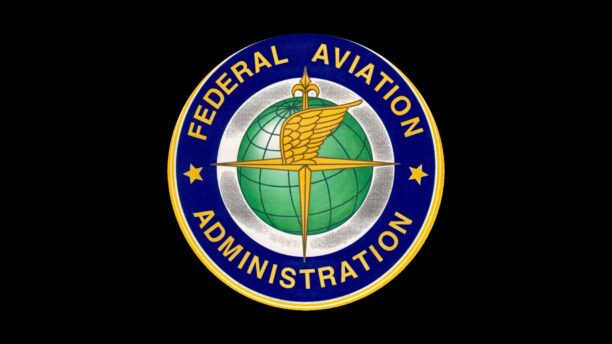Critical drone programs and rulemaking at the FAA are slowing or pausing as the government shutdown enters its fourth week, while core flight safety operations continue.
FAA Under Pressure as Shutdown Drags On
The government shutdown has entered its fourth week, and its impact is spreading across the aviation community. While essential safety functions continue, much of the Federal Aviation Administration’s broader work has slowed or stopped entirely.
About 11,000 FAA employees (out of about 45,000) have been furloughed, leaving a smaller group of “excepted” staff to handle air traffic operations and immediate safety tasks. Air travel remains safe and controlled, but progress on long-term programs—including those that support the drone industry—has largely paused.
For commercial drone operators, the timing could not be worse. As the industry looks ahead to a long-awaited Beyond Visual Line of Sight (BVLOS) rule and expanded integration into the national airspace, the work required to move those goals forward is stuck in neutral.
Waiver and Exemption Processing Delayed
Part 107 waivers and exemptions are a vital part of drone operations in the United States. These authorizations allow pilots to operate beyond basic limits, enabling flights beyond visual line of sight, or in complex environments.
During the shutdown, the FAA’s online waiver portal remains open, but most staff who process requests have been furloughed. According to multiple aviation sources, operators can still submit applications, but they should expect significant delays. Only safety-critical or time-sensitive requests may be handled while regular reviews are paused.
The impact is broad. Companies that rely on waivers for inspection, mapping, and infrastructure monitoring may face interruptions in project planning. Public-safety agencies that depend on timely authorizations for emergency drone operations could also experience delays. Each day of backlog compounds the challenge once funding returns.
BVLOS Rulemaking on Hold
Before the shutdown, the FAA had been analyzing more than 3,000 public comments submitted on the BVLOS Notice of Proposed Rulemaking, or Part 108. The proposal represents a major milestone in commercial drone integration, outlining the safety standards and operational limits that would enable widespread beyond visual line of sight flight.
That work is now paused. Rulemaking is not considered an essential activity during a funding lapse, so staff assigned to analyze comments and draft revisions are not working. The result is an inevitable delay in the BVLOS timeline.
Industry leaders say the uncertainty could slow investment and planning. Many drone manufacturers and service providers are aligning product development and operational models around BVLOS authorization. A delay of even a few months could affect testing, insurance, and compliance efforts across the sector.
Safety Operations Continue with TFRs and NOTAMs
Not everything has stopped. Temporary Flight Restrictions (TFRs) and Notices to Air Missions (NOTAMs) continue to be issued and enforced. These air safety notices are handled by essential personnel whose work protects both crewed and uncrewed aircraft from unsafe conditions.
The FAA recently issued new TFRs around sensitive areas, showing that the system remains active despite the funding lapse. Drone pilots are still required to check for TFRs before every flight. Safety operations, from air traffic control to incident response, remain the agency’s highest priority.
Modernization and UTM Work Stalled
Earlier this year, Transportation Secretary Sean Duffy announced a sweeping modernization plan for the FAA, promising a new air traffic control system and a “Prime Integrator” to overhaul radar, telecommunications, and software infrastructure. Duffy said the initiative would “unlock the future of air travel,” including support for advanced drone and air mobility operations.
That effort is now largely paused. Most modernization programs fall under non-essential categories, meaning work stops until appropriations resume. Contracts sit idle, project planning is frozen, and technical staff supporting Uncrewed Traffic Management (UTM) research are among those furloughed.
The delay undermines a key policy goal. Modernization is central to integrating drones safely into the national airspace, and every week of lost progress widens the gap between policy ambition and operational reality.
An Industry Waiting for Progress to Resume
The FAA continues to protect the safety of the airspace, but the shutdown has put progress on hold for drone integration. Waiver approvals are delayed, BVLOS rulemaking is paused, and modernization programs are stalled.
While the essential infrastructure that keeps the skies safe remains intact, the regulatory and technical work that supports the drone industry is not. Once funding is restored, the FAA will face a growing backlog of waiver requests, program reviews, and policy decisions that must be restarted.
For now, the message to the drone community is simple: keep flying safely, but expect to wait longer for the next steps toward full integration.
Read more:


Miriam McNabb is the Editor-in-Chief of DRONELIFE and CEO of JobForDrones, a professional drone services marketplace, and a fascinated observer of the emerging drone industry and the regulatory environment for drones. Miriam has penned over 3,000 articles focused on the commercial drone space and is an international speaker and recognized figure in the industry. Miriam has a degree from the University of Chicago and over 20 years of experience in high tech sales and marketing for new technologies.
For drone industry consulting or writing, Email Miriam.
TWITTER:@spaldingbarker
Subscribe to DroneLife here.


